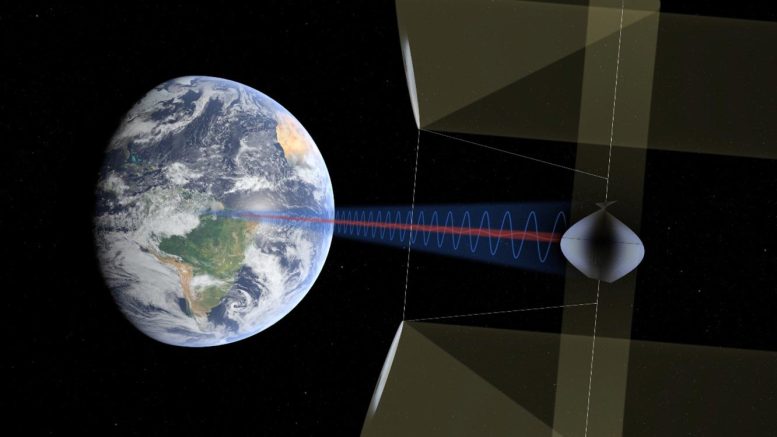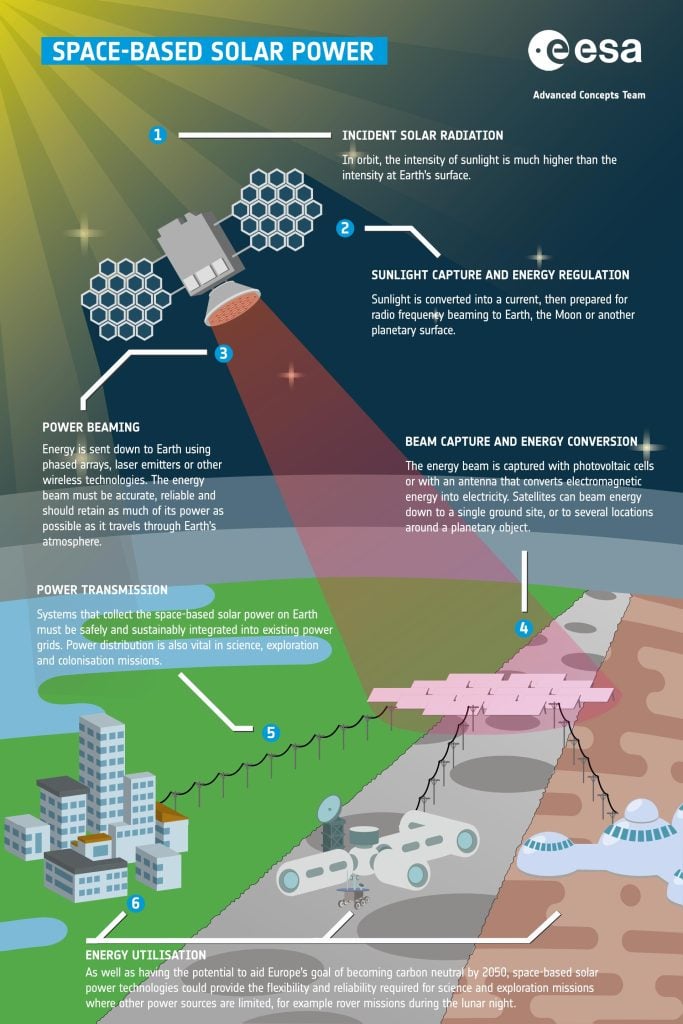
ESA is exploring space-based solar power collection, using modular satellites to capture sunlight more efficiently than on Earth.
Solar energy generation keeps on becoming cheaper and more efficient, but some basic limitations will always apply: solar panels can only generate power during the daytime, and much of the sunlight is absorbed by the atmosphere as it shines downward. So ESA is working on the concept of collecting solar power up in orbit, where sunlight is up to 11 times more intense than across European territory, then beaming it down to the ground for use.
As part of that effort, a new project looks into designing solar-power satellites, which would become the largest structures ever built in space. Frazer-Nash Consultancy will study the modular construction of solar-power satellites, to efficiently dissembling them as they come to their end-of-life for reuse or recycling.

Solar energy generation has grown far cheaper and more efficient in recent years, but no matter how much technology advances, fundamental limitations will always remain: solar panels can only generate power during the daytime, and much of the sunlight is absorbed by the atmosphere during its journey to the ground. What if instead we could collect solar power up in space and beam it down to the surface? ESA is seeking ideas for technologies and concepts for solar power satellites that will do precisely this.
Incident solar radiation
In orbit, the intensity of sunlight is much higher than the intensity at Earth’s surface.
Sunlight capture and energy regulation
Sunlight is converted into a current, then prepared for radio frequency beaming to Earth, the Moon or another planetary surface.
Power beaming
Energy is sent down to Earth using phased arrays, laser emitters or other wireless technologies. The energy beam must be accurate, reliable and should retain as much of its power as possible as it travels through Earth’s atmosphere.
Beam capture and energy conversion
The energy beam is captured with photovoltaic cells or with an antenna that converts electromagnetic energy into electricity. Satellites can beam energy down to a single ground site, or to several locations around a planetary object.
Power transmission
Systems that collect the space-based solar power on Earth must be safely and sustainably integrated into existing power grids. Power distribution is also vital in science, exploration and colonization missions.
Energy utilization
As well as having the potential to aid Europe’s goal of becoming carbon neutral by 2050, space-based solar power technologies could provide the flexibility and reliability required for science and exploration missions where other power sources are limited, for example rover missions during the lunar night.
Supported through the Discovery element of ESA’s Basic Activities, this project was initiated through ESA’s Open Space Innovation Platform, seeking out promising new ideas for space.
Never miss a breakthrough: Join the SciTechDaily newsletter.
5 Comments
I remember this idea being proposed back in the 1980’s and reported in Radio-Electronics magazine, IIRC.
Tesla coil would be easier.
I’ve been hoping this idea would gain some traction.
Just got to keep an eye on Dr Evil to make sure he doesn’t get any ideas…
I heard the best way to combat global warming is to direct even more solar energy to the earth. Brilliant!
What could possibly go wrong